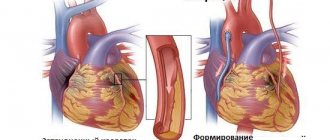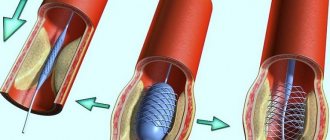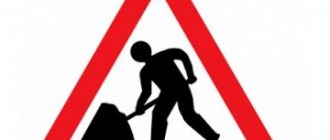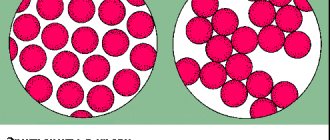Stroke is a dangerous disease with an acute circulatory disorder in the brain, which develops as a result of blockage of blood vessels or their damage. Most often it affects older people.
Stroke is the second most common cause of death after cardiac ischemia. Among diseases leading to disability, it ranks first.
If a stroke occurs, emergency medical care is required and should be provided within the first 3-8 hours. Even if help was timely and the patient survived, the consequences can be severe. Partial or complete loss of motor function, leading to disability, cannot be ruled out. According to statistics, about 80% of patients become disabled after a stroke, and a quarter of them require constant care throughout their lives. Only a fifth of all stroke survivors can return to relatively normal work activities after rehabilitation measures. Depending on the severity of the condition, the patient may be assigned disability group 1, 2 or 3.
Types of stroke
There are two types: hemorrhagic stroke and ischemic stroke.
Ischemic
This type of disease is the most common - about 80% of all cases. Most often occurs in older people. It is also called cerebral infarction. Ischemic stroke occurs due to impaired blood circulation in the brain due to narrowing of the lumen of blood vessels or blockage by blood clots. As a result, part of the brain is no longer supplied with blood and tissue death (necrosis) of this area occurs.
In a hemorrhagic stroke, a blood vessel ruptures and bleeds into the brain.
Hemorrhagic
It occurs from a rupture of a brain vessel. There are two types of hemorrhagic stroke: cerebral hemorrhage and subarachnoid hemorrhage.
The first is the most common and usually develops in people around 50 years of age. The main cause is hypertension, less often - atherosclerosis.
The second type is a hemorrhage into the space between the membranes of the spinal cord and brain, which contains the cerebrospinal fluid (CSF). Such a stroke can occur at the age of 30. Its main causes are arterial hypertension, smoking, alcoholism, and taking a large dose of alcohol at one time.
Criteria for establishing a disability group
Disability group I is assigned to severe visible impairments in the functions of movement and self-care. The second disability group is assigned to patients who have obvious impairments in the functions of movement, communication, orientation, behavior control and self-care of the second degree. Patients with mild impairments of mobility, ability to work and first degree can apply for assignment to the third disability group.
During the re-examination, experts take into account whether the patient will be able to return to work if his health improves. If, within five years, disabled people of the first or second group do not experience improvement, disability is established without an expiration date.
If the patient has been refused recognition of disability, he can file an application to appeal the decision of the MSEC. The patient always retains the right to an independent examination. To do this, he can go to court, however, the decision received after the court can no longer be challenged.
Citizens are assigned a disability group without specifying a period for re-examination, and citizens under 18 years of age are assigned the category “disabled child” until the citizen reaches the age of 18:
- no later than two years after the initial recognition as disabled of a citizen who has diseases and defects, irreversible morphological changes, dysfunctions of organs and systems of the body;
- no later than four years after the initial recognition of a citizen as disabled, if it is revealed that it is impossible to eliminate or reduce during the implementation of rehabilitation measures the degree of disability caused by persistent irreversible morphological changes, defects and dysfunctions of organs and systems of the body.
Call and they will make an appointment with a neurologist. Specialists at the Yusupov Hospital use the most effective medications, individual treatment and rehabilitation regimens to minimize the consequences of ischemic stroke. Most patients return to work and do not need to be assigned a disability group.
Who is given disability
Not all stroke survivors can apply for disability. The group can be obtained strictly for medical reasons. It is prescribed in accordance with the Federal Law and its amendments based on the results of all necessary examinations. It is usually given to those patients in whom part of the brain has not fully recovered, movement, speech, and other functions are impaired.
- The first group is indicated for patients who have lost the ability to care for themselves and need constant help and care, as well as for those who can partially care for themselves, while they need to provide the necessary social and everyday functions.
- The second group includes patients whose dysfunction is persistent and severe, but they have not lost the ability to care for themselves.
- The third group is assigned to people with moderate impairments and moderate limitations in functions, which may subsequently disappear. In this case, the ability to work can be preserved, but some types of work are prohibited.
What disability group is assigned?
Depending on the dysfunction of the body resulting from an ischemic stroke and impairment of certain functions, patients are assigned disability group I, II or III. If the patient is under 18 years of age, he is recognized as a “disabled child.”
Disabled people of the first group must undergo re-examination every two years, and disabled people of the second and third groups – every year. This is necessary so that the commission can track deterioration or improvement of health. Depending on the results, the disability is either extended or the relevance of the previously assigned group is revised.
The patient is recognized as disabled after suffering an ischemic stroke, based on the following reasons:
- deterioration of health with a pronounced deterioration in neurological functions, which is caused by the consequences of an ischemic stroke;
- partial or complete loss of self-care, independent orientation and movement, loss of control of one’s behavior or speech impairment;
- progressive course of heart disease;
- repeated disturbances of cerebral blood flow;
- previous ischemic strokes.
A medical and social examination can be carried out at the patient’s place of residence, registration or attachment to a medical institution. If a health care institution issues a conclusion that the patient is unable to appear for an examination due to health conditions, an examination at home or in a hospital is allowed. If there is a special note in the documents about permission to conduct a medical and social examination at home, the disability group can be carried out in absentia using the documents provided.
How to get
Every patient who has suffered a stroke and has medical indications for this has the right to receive disability. The assignment of the group is carried out by a medical expert commission. During a special examination, the patient’s condition, his ability to work are assessed and restrictions on physical activity are prescribed.
Registration will take quite a long time. First of all, the patient needs to receive a referral from the attending physician for a medical and social examination (MSE), then take tests and undergo all the necessary examinations.
Thus, you need to prepare the following documents:
- statement;
- a referral from a doctor for examination with the signature of the chief physician and the seal of the medical institution;
- results of examinations and tests that are not in the medical history;
- an outpatient card from the clinic where he is being treated;
- ID card (passport);
- if a person is employed - a copy of the work record book, salary certificate;
- sick leave (if any) and a certificate of occupational diseases and injuries.
All examinations can be completed in a hospital or in a clinic (if the person is walking). A referral for an examination is given at the clinic after the medical history and test results have been reviewed.
After a stroke, the patient may lose the ability to move independently.
After submitting the application, the patient will be given a date to undergo the commission, which usually includes three specialists. Based on all the documents provided, a decision will be made to assign disability or refuse. During the examination, all the conditions in which the patient is located are analyzed: labor, household, social.
The group is determined by the following categories:
- the patient’s dependence on others;
- limited self-care abilities;
- ability to move;
- ability to navigate in space;
- ability to control one’s behavior and communicate with others.
During the examination, a protocol must be kept. In both the case of assignment of disability and in case of refusal, an act is drawn up, which is an official document.
After receiving the group, a person needs to apply to the pension fund in order to be assigned a pension, and to the social fund to receive benefits.
If the patient is refused and does not agree with the decision of the commission, he has the right to submit a written application within three days to the ITU bureau, where he was examined, for a re-examination. If he is not satisfied with the answer again, he can appeal it at another level - to the Federal Bureau of ITU.
To obtain a disability, you need to undergo an examination and receive a referral to ITU
If the disability is not lifelong, then it is necessary to undergo an annual examination for groups 2 and 3 and once every two years for group 1. It is appointed to monitor positive dynamics and possible revision of the group. The annual examination can be canceled when a woman reaches 50 years of age and a man reaches 60 years of age.
If disability is assigned for life, but the person does not agree with the group, he can apply for re-examination.
Patients from the following categories are more likely to receive a disability group:
- previously had a stroke and were not treated;
- hypertensive patients;
- patients with disorders of the heart and blood vessels;
- people with kidney failure;
- patients with diabetes;
- people with chronic diseases that limit normal life activities;
- patients with bad habits.
Surveys and documents
If the patient has suffered an ischemic stroke, then after discharge from the neurology clinic he needs to contact his doctor at the place of registration. Doctors at the Yusupov Hospital provide an extract from the medical history, which describes in detail the course of the disease, the results of examinations and tests performed, and also indicates in detail what medications the patient was treated with and what rehabilitation methods were used. At an appointment with a doctor at the clinic, you should talk about the existing problems and warn him about your intention to register for a disability group. In this case, the neurologist is obliged to write down everything in the patient’s medical record and give a referral to specialists: a cardiologist, psychiatrist, ophthalmologist and endocrinologist.
After this, patients undergo a full examination in the hospital. Doctors at the Yusupov Hospital use modern methods for diagnosing the consequences of ischemic stroke, which are accurate and provide the basis for obtaining a disability group. At the neurology clinic, patients undergo biochemical and clinical blood and urine tests and are examined:
- electroencephalography;
- electrocardiography;
- magnetic resonance or computed tomography:
- X-ray of the skull;
- Doppler ultrasound examination of the vessels of the neck and brain.
In order to undergo a medical and social expert commission, the patient must have with him all the certificates and documents that can confirm the impairment of neurological functions and disability. Experts must provide:
- referral of the attending physician to undergo a commission;
- passport, its photocopy of pages with personal data and registration;
- a copy of the work book certified by the HR department;
- income certificate if the patient works;
- outpatient card;
- an extract from the Yusupov hospital and a photocopy of it;
- application for examination.
When re-examination, it is necessary to prepare a certificate of disability received previously.
Diseases for group III
It can be difficult to distinguish healthy people from group III disabled people based on external signs. Citizens with this group have the right to work, since the rate of loss of function is 40-60%.
Diseases for assignment to disability group III include:
- incipient cancer;
- absence of one eye;
- ptosis of one eye (permanent, persisting after treatment);
- bilateral deafness;
- jaw defects in the absence of the ability to chew;
- facial defects that can only be corrected through surgery;
- defects of the skull bones;
- paralysis of the hand or one of the limbs, causing muscle wasting;
- the presence of a foreign object in the brain after injury;
- installation of a foreign body in the heart area (pacemaker, artificial valve);
- amputation of the hand, one or more fingers;
- one kidney or lung.
Diseases for group II
For group II, the indicator is a deviation from the norm of 70-80%. A person is able to perform simple actions (including resorting to special means or the help of other persons). He works despite physical or mental disabilities, but under special conditions. Among the diseases:
- fecal fistula;
- chronic pulmonary insufficiency or absence of one lung;
- irreversible visual impairment;
- cirrhosis of the liver;
- mental illness;
- skull defects;
- leg paralysis
What does disability give?
Disability is the status of an individual, which is acquired in connection with deviations in his state of health, accompanied by a persistent disorder of body functions due to illness or injury. The law established a list of diseases for which the status of a disabled person is granted, and the rules for obtaining it. The status of a disabled person makes it possible to receive support measures established by the state - cash payments, free medicines, tax, labor or other benefits.
| Support measure | Characteristics | Base |
| Pension provision | Insurance part of the pension (if you have even 1 day of service without reference to age) | Art. 9 Federal Law No. 400-FZ dated December 28, 2013 |
| Social pension (in the absence of grounds for assigning insurance) | Art. 11 Federal Law No. 166-FZ dated December 15, 2001 | |
| EDV | Indexed annually. Installed when refusing a set of social services. The payment amount is:
| Art. 28.1 Federal Law No. 181-FZ dated November 24, 1995 |
| Set of social services | Prescription medications, sanatorium-resort vouchers by referral, travel by suburban or intercity transport to the place of treatment and back | Art. 6.1 Federal Law No. 178-FZ dated 17.97.1999 |
| In the world of work | Shortened working week - 35 hours (for grades I and II) | Art. 92 Labor Code of the Russian Federation |
| Length of working day, shifts according to medical indications | Art. 94 Labor Code of the Russian Federation | |
| Admission to night and overtime work only with the consent of the disabled person | Art. 96, 99 Labor Code of the Russian Federation | |
| Work on weekends and holidays in the absence of medical prohibitions | Art. 113 Labor Code of the Russian Federation | |
| Vacation at your own expense up to 60 calendar days per year at a time convenient for the disabled person | Art. 128 Labor Code of the Russian Federation | |
| In the field of education | Admission to universities according to a quota (disabled people of grades I and II, from childhood, with war trauma) | Art. 71 Federal Law No. 273-FZ dated December 29, 2012 |
| In the field of employment | Employer quotas for jobs | Federal Law No. 181-FZ |
| Tax | Deduction in the amount of 500 rubles. for each month of the calendar year in terms of income that is subject to personal income tax | Art. 224 Tax Code of the Russian Federation |
| Reduction of the tax base for land tax by the cadastral value of 600 m² of land area owned by a disabled person since childhood | Art. 391 Tax Code of the Russian Federation | |
| Exemption of disabled people from childhood from property tax (in part 1 of each type of taxation object) | Art. 407 Tax Code of the Russian Federation |
Limitations in work activity after a stroke
Of course, intensive work activities are contraindicated for all patients who have suffered a stroke. We list the most commonly used restrictions:
- elimination of psycho-emotional and heavy physical stress is required;
- do not work under conditions of sudden temperature changes and vibration loads;
- any interaction with toxic and harmful substances is excluded;
- It is prohibited to carry out activities in a prolonged forced position of the body in tension, especially regarding the neck and head.
When considering the restrictions in a patient’s work activity after a stroke, first of all, the complications that arose as a result of the disease are taken into account; it is also necessary to assess his capabilities and limitations in his life.
What disability groups can be established after a stroke?
The commission establishes the disability group as a result of the illness in accordance with the criteria for assessing the patient’s condition. There are many criteria by which group membership can be assessed, the main ones being:
- the patient’s dependence on other persons – the ability or impossibility of self-care;
- the ability to move the patient;
- spatial orientation;
- communication criterion;
- control of patient behavior.
Let's consider the main criteria for establishing disability for each of the groups: Group I (first group of disability) - the basis for establishing a stroke is persistent motor and functional impairments of high severity, which led to a sharp limitation of normal life activities and deprivation of the patient’s ability to self-care, resulting in the need for constant care for the victim. Group II (second disability group) - the basis for the diagnosis of stroke is persistent functional impairment of severe severity. The group is established for patients who have retained the ability to self-care, but are unable to work. Group III (third disability group) - the basis for the diagnosis of stroke is the presence of persistent functional disorders of moderate severity in the patient, which may disappear after some time. The group is established for able-bodied patients with minor health disorders for whom certain types of work may be contraindicated.
Important! Establishing disability in the event of a stroke implies re-examination, taking into account the possibility for the patient to return to normal life and work activity upon restoration of dysfunction. However, after 4 years, if there are no changes, the disability group is established indefinitely.
Main risk factors
Before talking about what kind of prevention is necessary, you should decide who primarily suffers from acute cerebral ischemia. There are groups of people whose risk of disease is many times higher than others. These are the so-called risk groups. They are divided into controlled and uncontrolled.
It is impossible to change anything if there is a hereditary predisposition, gender (men), or old age. It is these three factors that increase the risk of stroke and are considered uncontrollable.
Controlled factors include the following conditions:
- Hypertension. Persistent and difficult to correct with drugs high blood pressure from 160/90 mm Hg. Art. increases the possibility of stroke by 4 times, and at a pressure of 200/110 mm Hg. 10 times.
- Heart rhythm disturbances. With atrial fibrillation, blood hemodynamics are disrupted. Blood clots that form in the cavities of the heart muscle rush into other vessels and are a common cause of stroke. As a rule, the disease caused by this cause is characterized by severity and a negative prognosis.
- Diabetes. Violations of the rheological properties of blood and changes in the vascular wall with this disease occur 5 times more often.
- Smoking. Promotes the accelerated formation of atherosclerotic changes in the carotid arteries, which causes a 2-fold increase in the possibility of vascular accident.
- Atherosclerosis. High lipid levels are directly related to circulatory problems.
- Alcohol. Regular intake of large doses increases the risk by 3 times.
- Obesity.
- Passive lifestyle.
- The influence of constant stress.
- Diet disorder.










